Harvesting in a summer cottage, in a garden and in a vegetable garden is a joyful event. After it, you need to take care of the earth, trees and plants. The soil is carefully fertilized with nutrients. What fertilizers to apply in the fall under the dig? There are many substances, compounds and folk remedies that help gardeners in their difficult but joyful work.
Content
- 1 Why do you need to fertilize the soil in the fall
- 2 Soil preparation for fertilizing
- 3 Types of autumn fertilizers
- 3.1 Features of mineral fertilizers
- 3.2 Organics and its use
- 3.3 Synthetic fertilizer
- 3.4 Using Compost
- 3.5 Phosphorite flour and its use
- 3.6 Sulfate or potassium chloride
- 3.7 Calcium chloride
- 3.8 Wood ash
- 3.9 Bone flour
- 3.10 Siderata as a substitute for manure
- 3.11 Autumn fertilizers for fruit trees
- 3.12 Fertilizers for berry shrubs
- 3.13 What fertilize potato beds
- 3.14 Liming to reduce acidity
Why do you need to fertilize the soil in the fall
Autumn fertilizer is necessary for the garden for many reasons:
- to restore the functions of the soil and enrich it with microelements, potassium, nitrogen, phosphorus;
- crops will become resistant to frost;
- nutrients are needed for trees and plants in the spring - for full development;
- for protein-carbohydrate synthesis.
Soil preparation for fertilizing
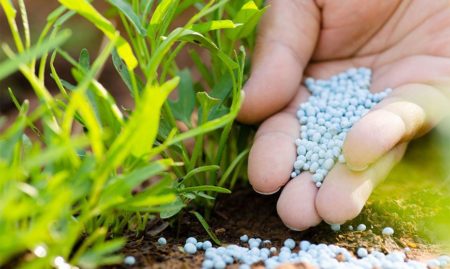
Preparation of land for fertilizing consists of several stages. First, the entire crop is harvested to clear the soil for the right substances. After collecting all the fruits, weeds and the remains of the tops with roots are removed.
The land is well watered, especially berry crops. The roots of the berry crops are in the upper layers of the soil, and autumn watering will do them good. Fertilizers that are applied before winter should dissolve in the ground. So, plants will receive the necessary substances for nutrition.
The roots of bushes and fruit trees are deep. Raspberries take root at a depth of 50 to 60 cm, and fruit - up to 2 m. This must be borne in mind when watering. Water consumption will be great, but it will help to get a good harvest for next year.
Types of autumn fertilizers
What fertilizers are applied in the fall? There are various substances that feed the earth:
- mineral fertilizers;
- organic matter;
- synthetic components;
- trace elements;
- siderates.
Features of mineral fertilizers
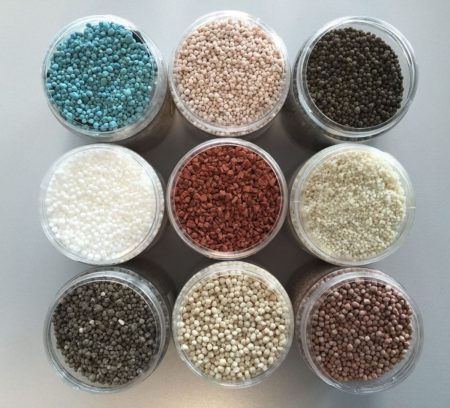
Mineral fertilizers feed berry, ornamental crops, fruit trees and shrubs. Feeding is chosen taking into account the needs of each type of tree or plant. If hosts grow in the country, they need a complex of substances for perennials. Ephedra love a special blend. All compounds must be applied to the earth in liquid form. Solutions quickly penetrate the roots and have a beneficial effect.
Autumn fertilizers for the garden should not contain nitrogen. Nitrogen stimulates the growth of garden crops and they need them in the spring, during a period of intensive growth. In autumn and winter, plants should rest in order to gain strength by spring.
The compositions contain the following substances:
- calcium;
- phosphorus;
- potassium.
They stimulate the maturation of shoots, protect them from frost and improve the immune system of garden crops. Detailed instructions for use are attached to the packaging with fertilizers. It must be adhered to so as not to harm the plants.
Organics and its use
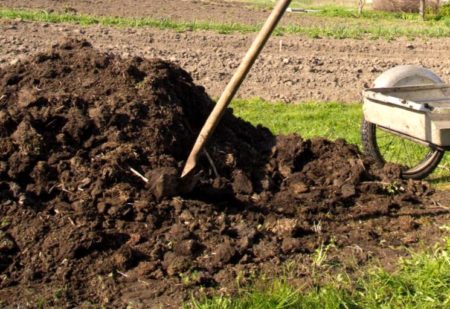
Of organic fertilizers, gardeners value manure. It enriches the soil with nutrients, making it soft and fertile.It is important to know how to properly use organics. It is dangerous to fertilize the soil with fresh manure in spring and summer. It can burn the roots of trees and plants. Autumn is the right time to apply fresh organics. Ammonia, dangerous to the roots, will be gradually washed away by melt water.
Organics are scattered on the ground. The land is immediately dug up, making sure that dung or litter remained at a depth of 10 to 15 cm. Deeply dug up organic matter will go into the soil, but trees and plants will not receive it. Organic consumption per 1 m2 is 1 bucket with a capacity of 10 liters.
Horse dung dense. It contains a lot of nitrogen, and it can be stored in the earth for a long time. During the winter, the fertilizer becomes softer. This happens gradually, so nutrients fall into the ground in the spring. Mullein also contains useful substances, but it is better to use it in the spring, in overripe form. Unlike horse manure, it is not so dense, and during the winter the plants will lose more than a quarter of the useful components.
Bird droppings are the most concentrated fertilizer. In summer and spring it is used in the form of a solution so as not to damage the foliage and roots. In autumn, it can also be applied to the soil without dilution. Gardeners consider it the best fertilizer for strawberries and strawberries.
Synthetic fertilizer
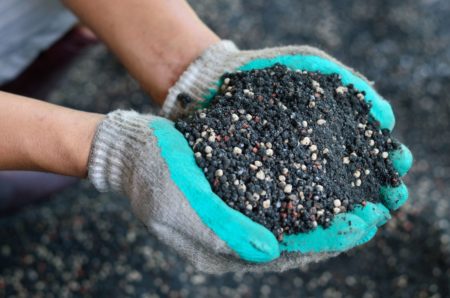
How to fertilize the earth in the fall, except for organic matter? There is a large selection of synthetic substances. First of all, these are superphosphates. Their dissolution occurs slowly, and the earth gradually receives nutrients, giving them to plants. 50 g of substance are used per 1 m2 of land.
Urea, or urea, contains nitrogen, but it is retained in the soil and is not washed out of it with water. When mixing nitrogen with phosphorus, you can get a good fertilizer for digging in the fall. 100 g of lime are mixed with 1 kg of superphosphate. The mixture is divided into two halves. Urea is added to one of them, the mixture is evenly sprinkled on the plot and dug.
Using Compost
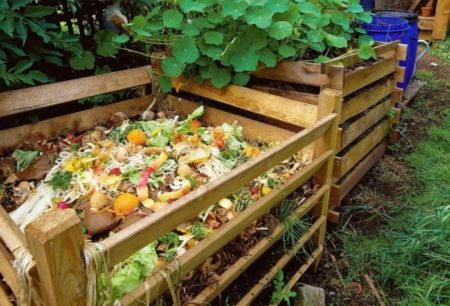
Compost is a type of organic compound. They are fertilized by such garden crops:
- all solanaceous;
- garlic and onions;
- all varieties of cabbage.
Humus is also used as mulch, covering them with plants for the winter. Moreover, its layer is from 5 to 7 cm. Fruit trees need a thick layer of compost. They cover the entire trunk circle. With the advent of spring, the soil mixed with humus should be slightly loosened.
Phosphorite flour and its use
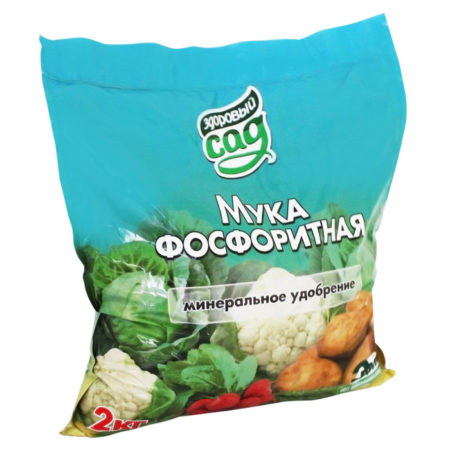
How to fertilize depleted soil or leached chernozem? One of the best remedies is phosphorite flour. If used together with manure, it will enrich the earth with phosphorus.
The fertilizer looks like a gray powder. It contains:
- 17% phosphorus;
- 30% calcium;
- eighteen; silica;
- 2% magnesium.
Flour consists of phosphorites, which are of natural origin. It can be stored for a long time in a dry place, and it will not lose its beneficial properties. Fertilizer is best used in acidic soils. It is soluble in weak acids and is easily absorbed by plants.
Sulfate or potassium chloride
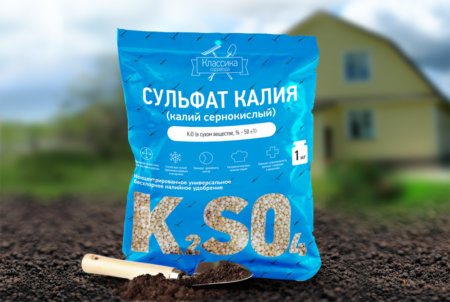
Fertilize the garden in the fall with sulfate or potassium chloride. Not all garden crops respond well to potassium.It is used together with phosphate rock or superphosphates. It is suitable for fertilizing adult fruit trees, a number of vegetable crops and berry plants.
Calcium chloride
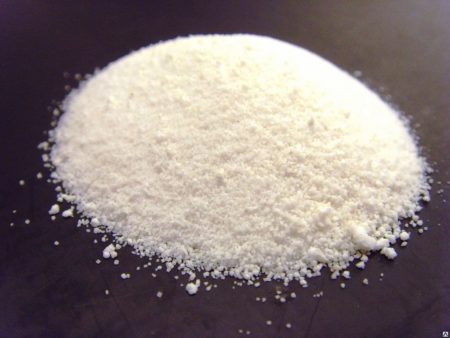
Most often they are fertilized with potatoes, scattering it across the field. Chlorine is unstable, it is quickly dissolved by groundwater. Calcium, by contrast, remains in the ground. This fertilizer must be applied at the rate of 20 g of substance per 1 m2 of soil.
Wood ash
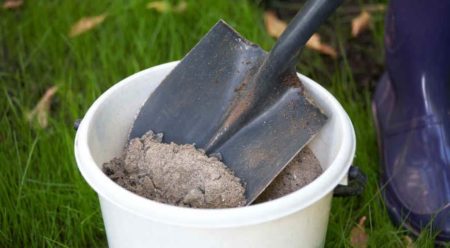
Wood ash contains trace elements that stimulate the growth of trees and plants. The best composition of ash can be obtained by burning tops from potatoes or woody branches. Like organics, it must be applied to the soil every 4-5 years, at the rate of 1 kg of substance per 1 m2. She is always fed:
- beets;
- potatoes
- Strawberries
- raspberries and other berry bushes;
- all kinds of cabbage.
Bone flour
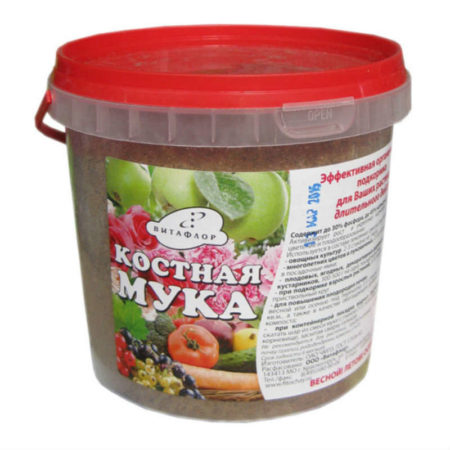
Cattle horns, bones and hooves are used as raw materials for bone meal. The powder obtained from the body parts of cattle is mixed with bone meal. The composition contains calcium and nitrogen. The weathering of nitrogen occurs over time, while calcium and phosphorus remain. Finished flour looks like a yellow powder. In addition to phosphorus and calcium, it is enriched with manganese, iron, cobalt, copper and iodine.
Siderata as a substitute for manure
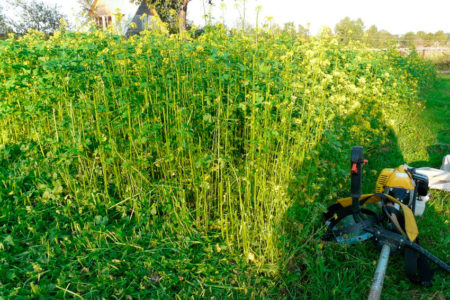
What fertilizers to put into the soil in the fall, if there is no manure? In the absence of organic matter, gardeners enrich the land with siderates. These are plants and herbs that are sown in the garden at the end of the season. As siderates use:
- clover;
- all legumes;
- mustard;
- rye;
- lupine.
With the onset of autumn, the land is plowed together with green manure. When buried in the soil, they enrich it with nutrients. They also planted tree-trunk circles, and dig in the autumn.
Mustard contains nitrogen, phosphorus and effectively destroys late blight. It also kills slugs and plant fungi that are harmful to plants. Due to its active growth, mustard is able to destroy any weed and enrich the soil with nutrients. If the earth begins to leach, this plant stops the process, retaining nitrogen. Mustard is safe for all types of garden crops (potatoes, grapes, trees, legumes). When used as a mulch, it retains moisture in the soil and prevents it from freezing.
Autumn fertilizers for fruit trees
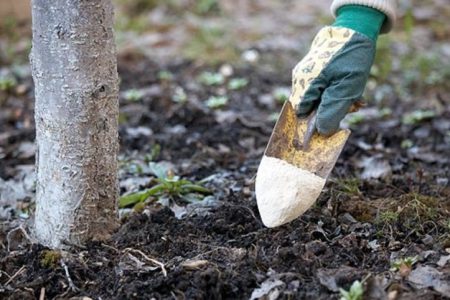
Autumn under fruit trees fertilizers containing potassium and phosphorus, humus, manure and complex compounds. The best time to submit them is the second half of October. Under each pear or apple tree, you need to pour 250 g of potassium sulfate and superphosphate in an amount of 350 g. Mineral fertilizers are combined with organic. You can also fill them with trunks of trees and water them.
Cherry and plum are fertilized with a solution. To prepare it, you need 3 tbsp. phosphate diluted in 10 liters of water. For one tree, approximately 4 buckets of mortar are used.
To increase the yield of trees, humus and mineral complexes are used - such as Autumn, Fruit Gardens, and Universum. Manure is used rotted. Near the near-stem circle, dig the soil and add 4 kg of manure to it. The dug up soil is mulched.
Fertilizers for berry shrubs
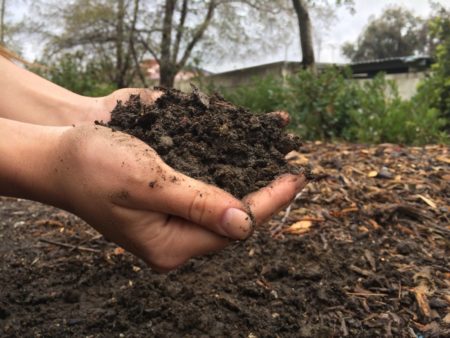
Berry bushes are fed after the entire crop has been harvested from them. The best fertilizer for berries is ash at the rate of 3 kg per 1 m2 of land. Ashes are made every 4-5 years.
Bird droppings are also useful for berry crops. Before use, it must be dried and packaged. On 1 m2 of soil leaves from 0.9 to 3 kg of litter. Sometimes the aisle is watered with a solution diluted 1:14.
What fertilize potato beds
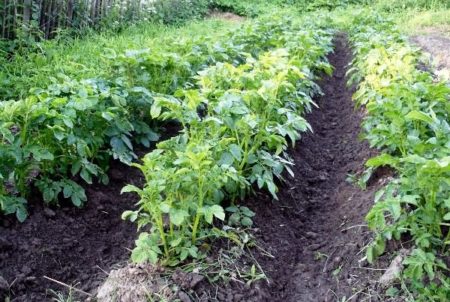
After harvesting the potatoes, the soil is dug up, plowed and mineral fertilizers applied to it. Most often, nitroammophoska is used at the rate of 2 tbsp. l substances per 1m2. From organic matter for potatoes, manure with the addition of straw is suitable.Before digging the soil, the beds are sprinkled with manure mixed with straw, at the rate of 6 kg per 1 m2.
Also for potatoes use all kinds of green manure. They are sown on the site from which the crop had just been harvested. In addition to nitroammophoski and green manure, potatoes are fertilized:
- superphosphate;
- vegetable ash;
- potassium chloride.
Liming to reduce acidity
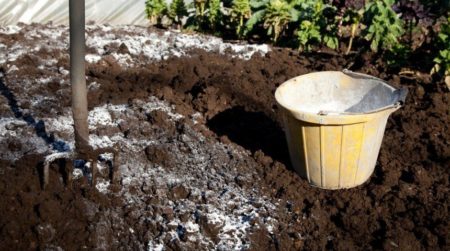
The acidity of the soil is checked using table vinegar. He is poured on a handful of earth. If the earth starts to hiss, the acidity level is normal. In the absence of hissing, the soil must be liming - with the help of chalk, dolomite flour or lime. When using these substances, mineral fertilizers do not contribute in the fall. They will dissolve poorly, and plants will not absorb them.
If ash is used as fertilizer, the acidity level of the soil will always be normal and liming will not be necessary.
It is important to know what fertilizers are needed in the fall. This will help restore soil fertility, strengthen the immune system of garden crops and provide a good harvest for next year.

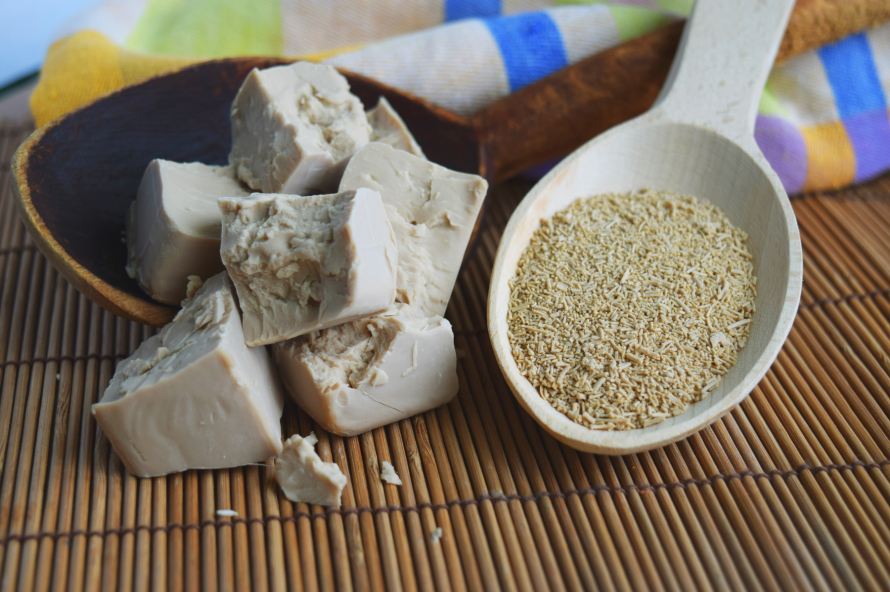
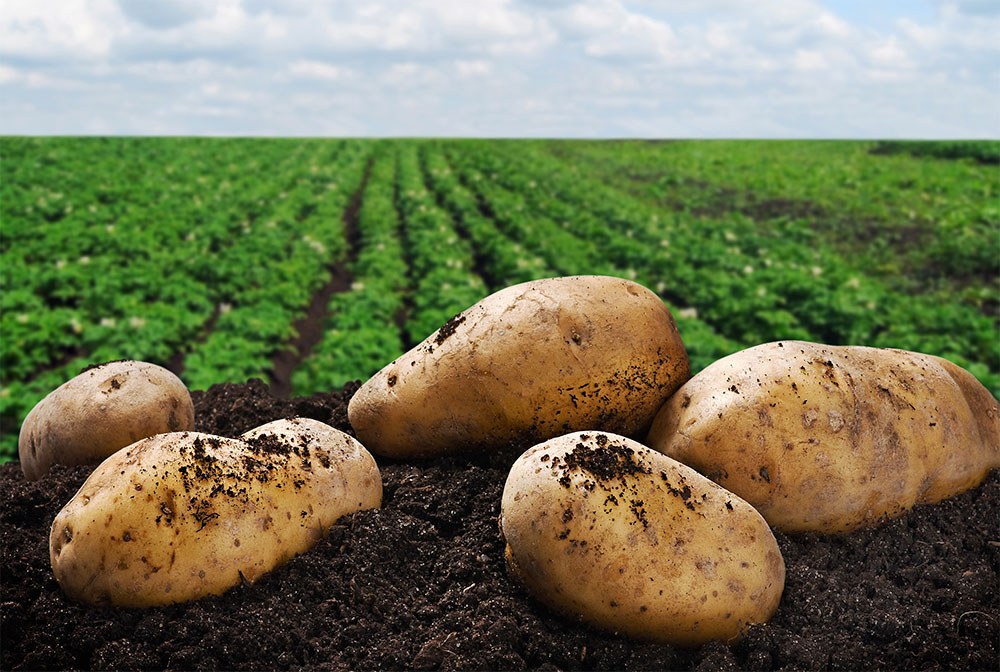
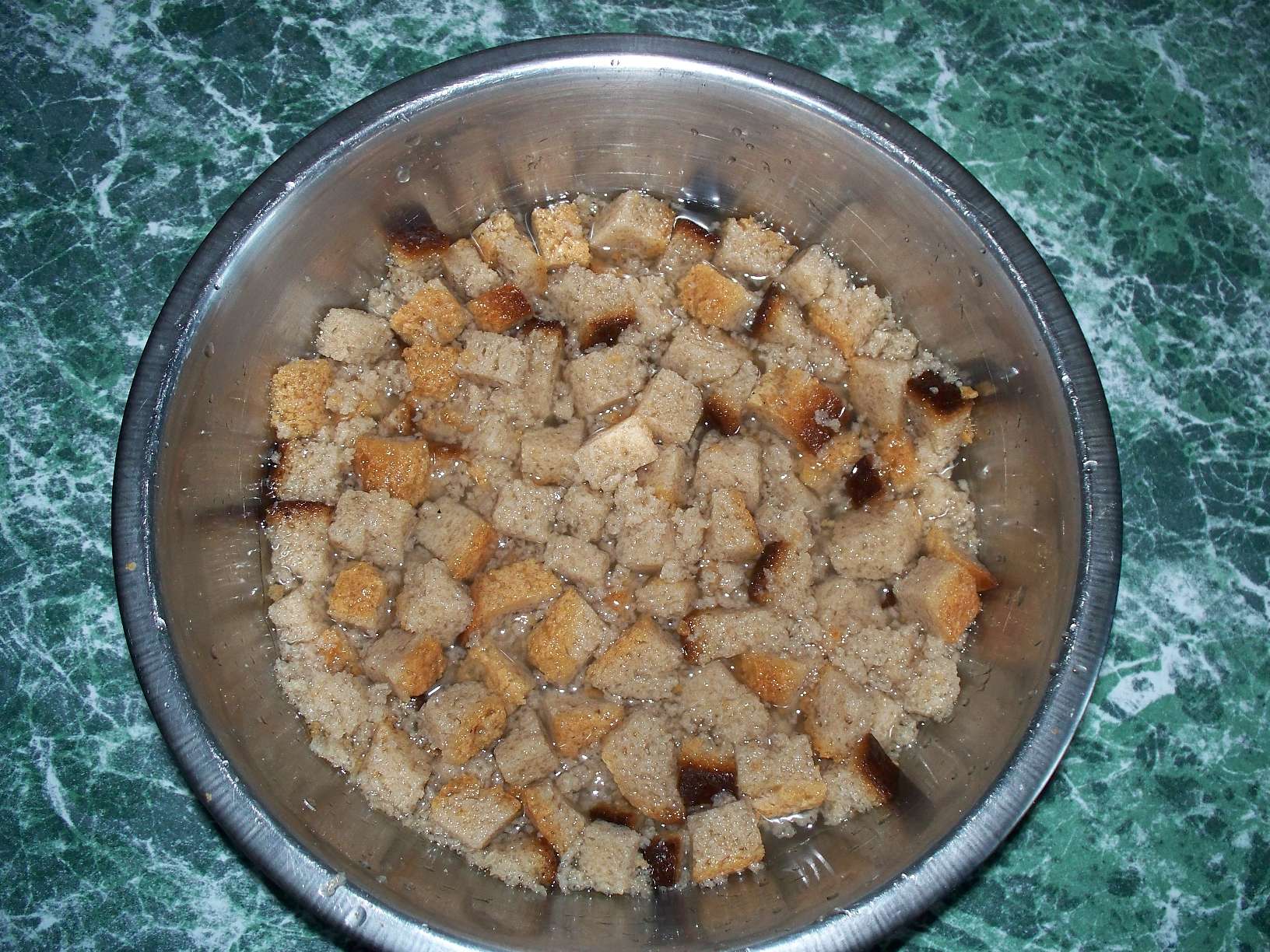
 Superphosphate: what is it and how to apply it
Superphosphate: what is it and how to apply it What problems can be expected from siderats?
What problems can be expected from siderats? Secrets of the collection, storage and use of eggshells in the garden
Secrets of the collection, storage and use of eggshells in the garden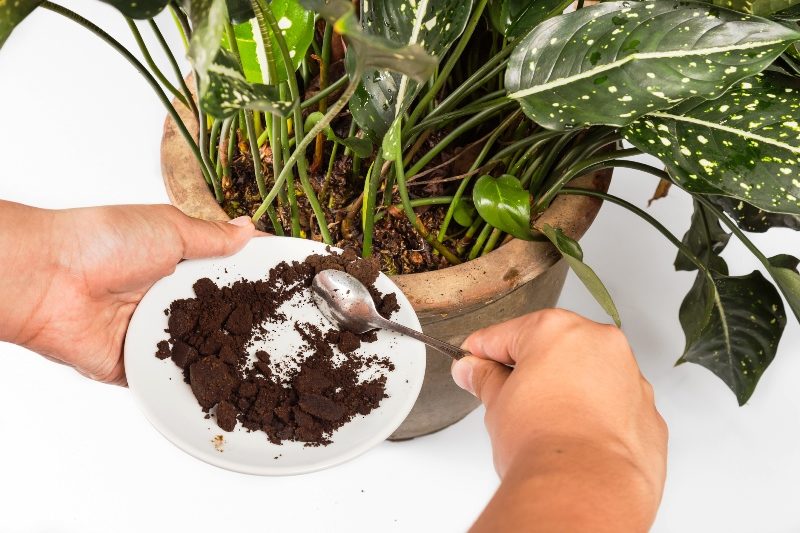 The most popular top dressing for indoor plants
The most popular top dressing for indoor plants
Eduard Vyazemsky
“It is necessary to fertilize the earth with organic matter every 4-5 years.” - This is great stupidity and it is not worth spreading it.
Organics need to be brought in all year round. And in fresh form, and in the form of composts. And the more, the better.
The easiest and most effective way is to mulch.